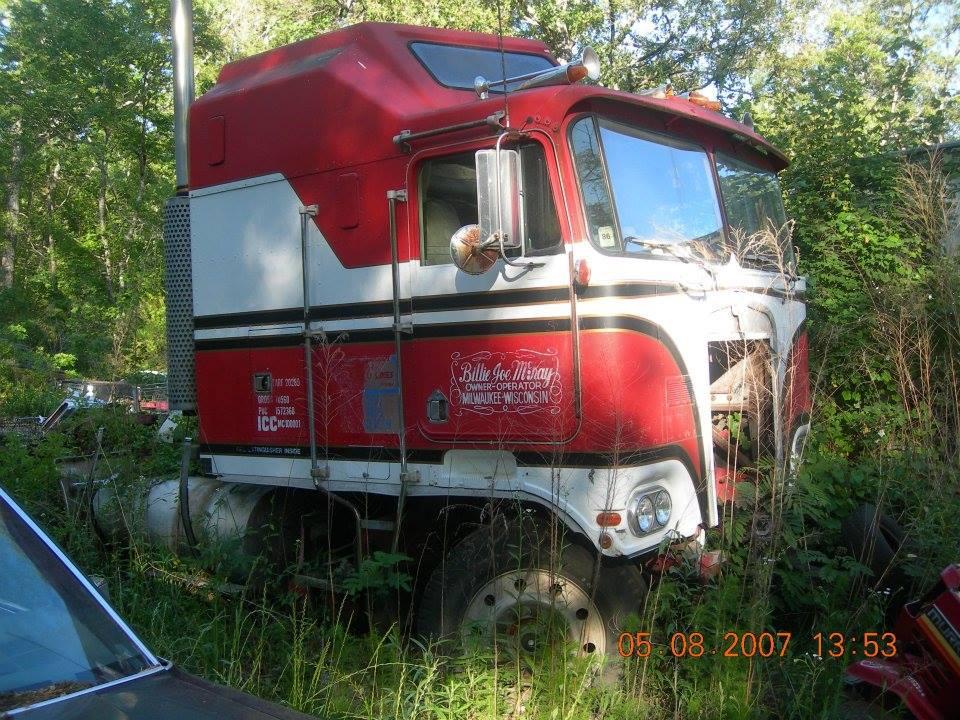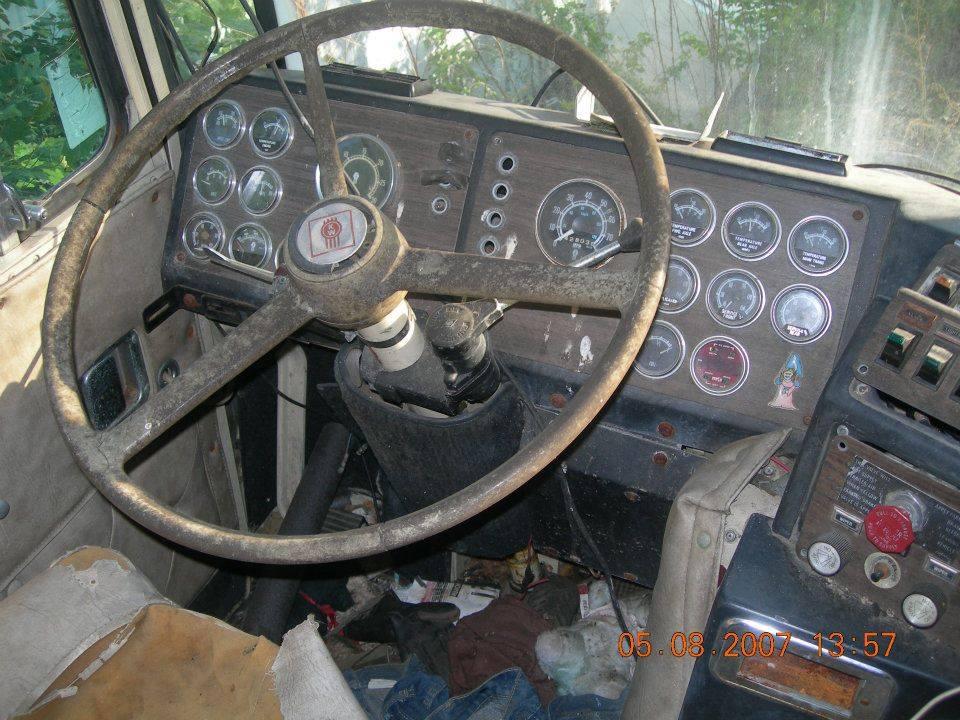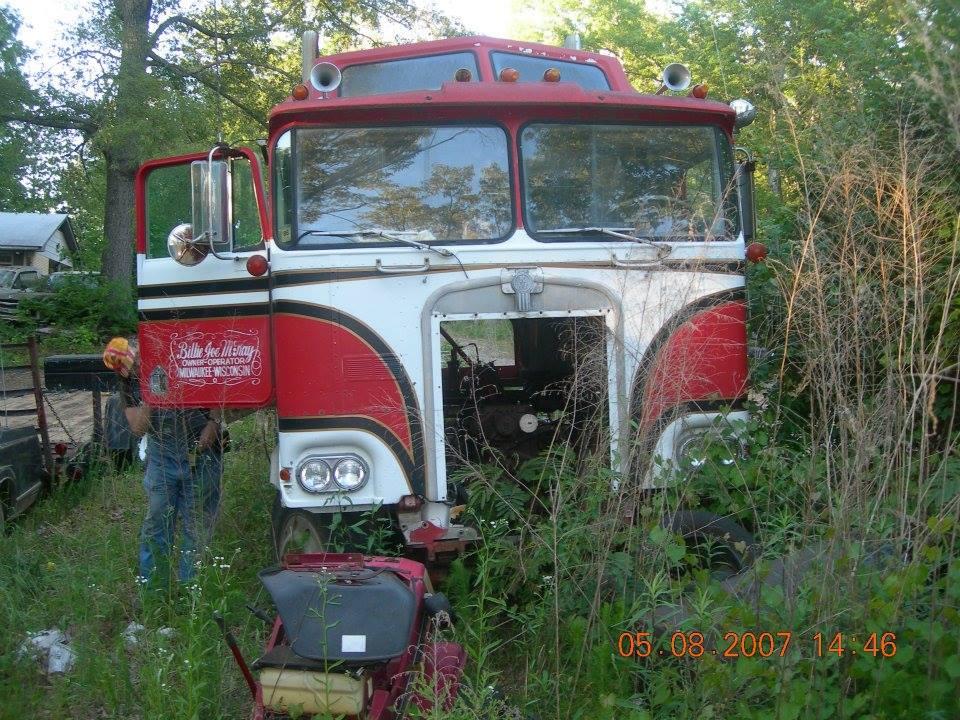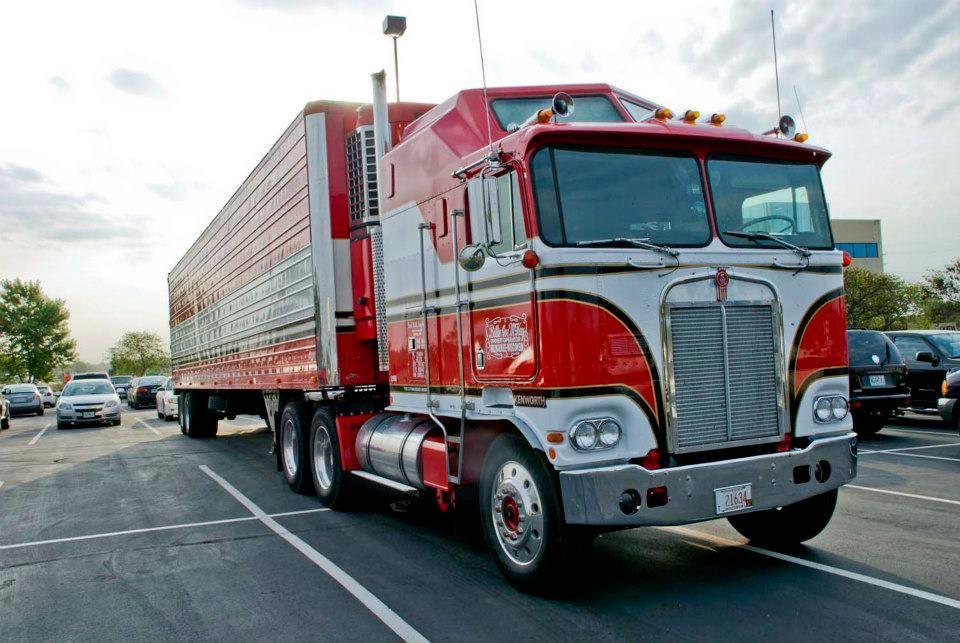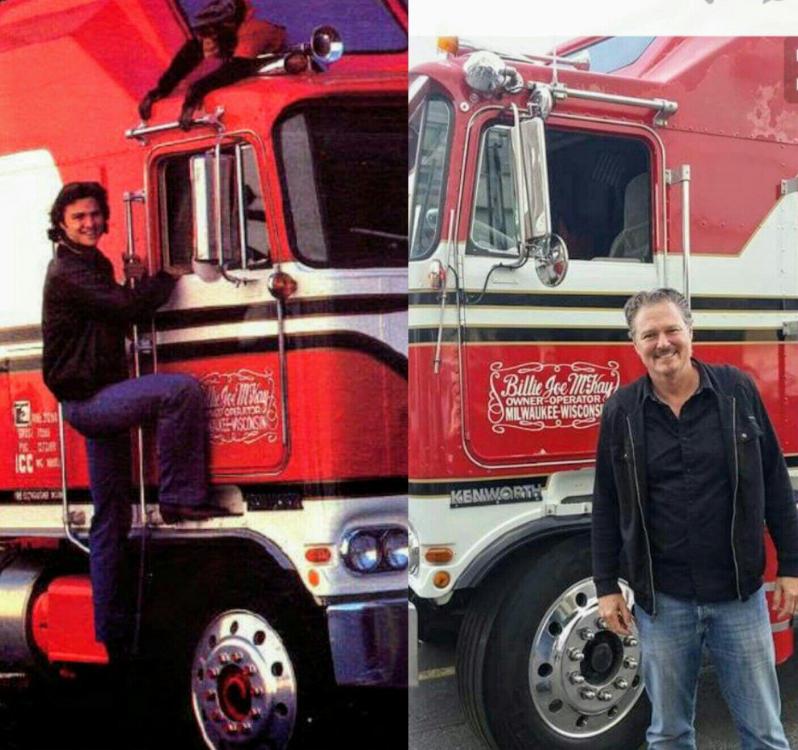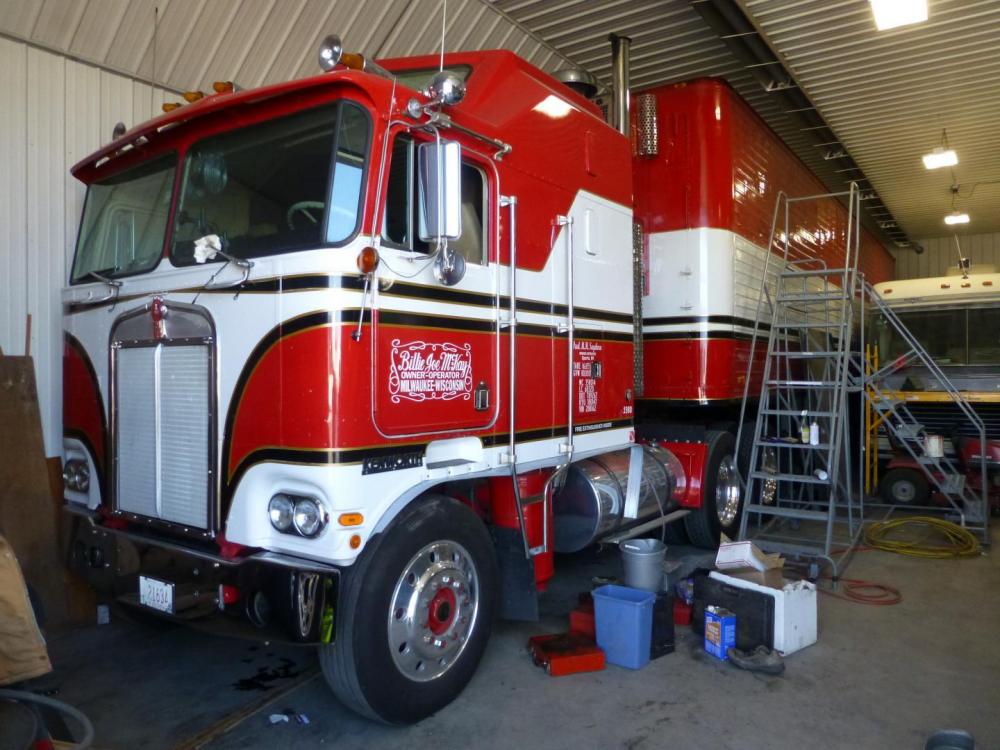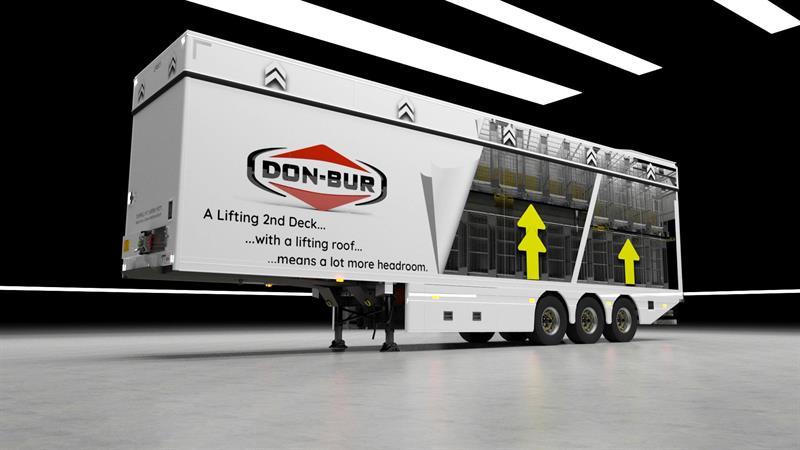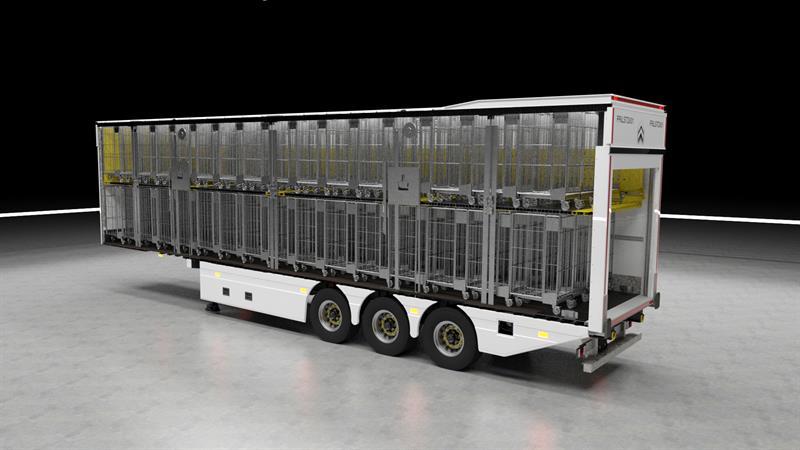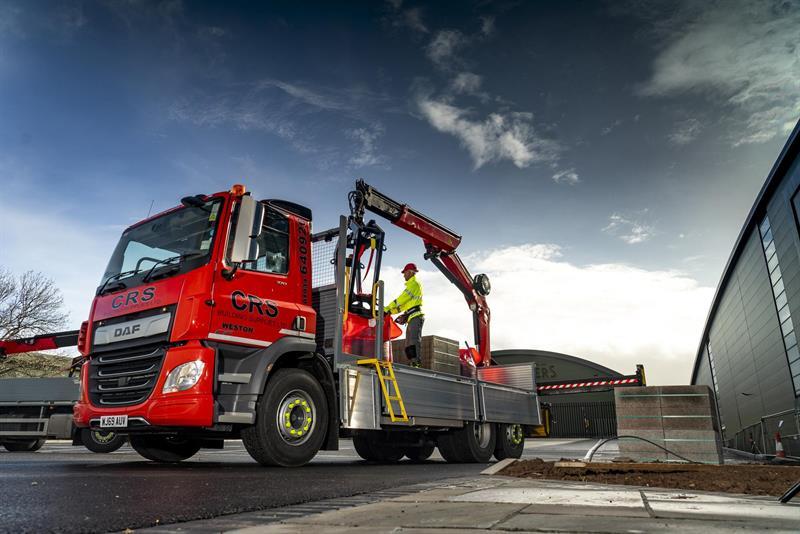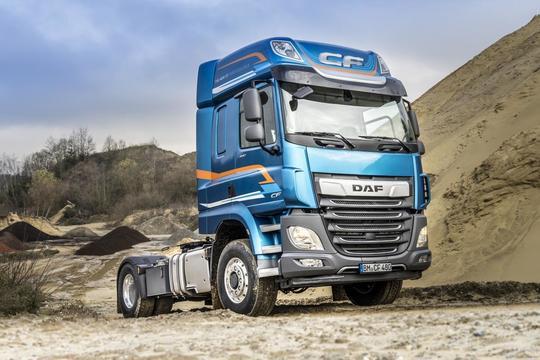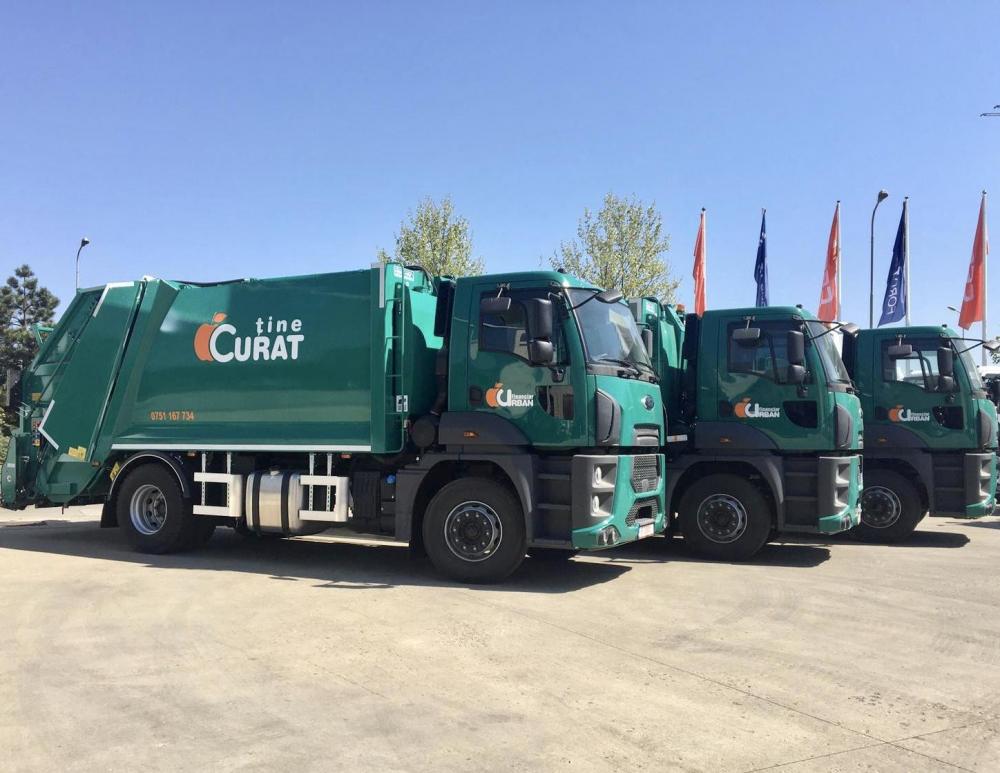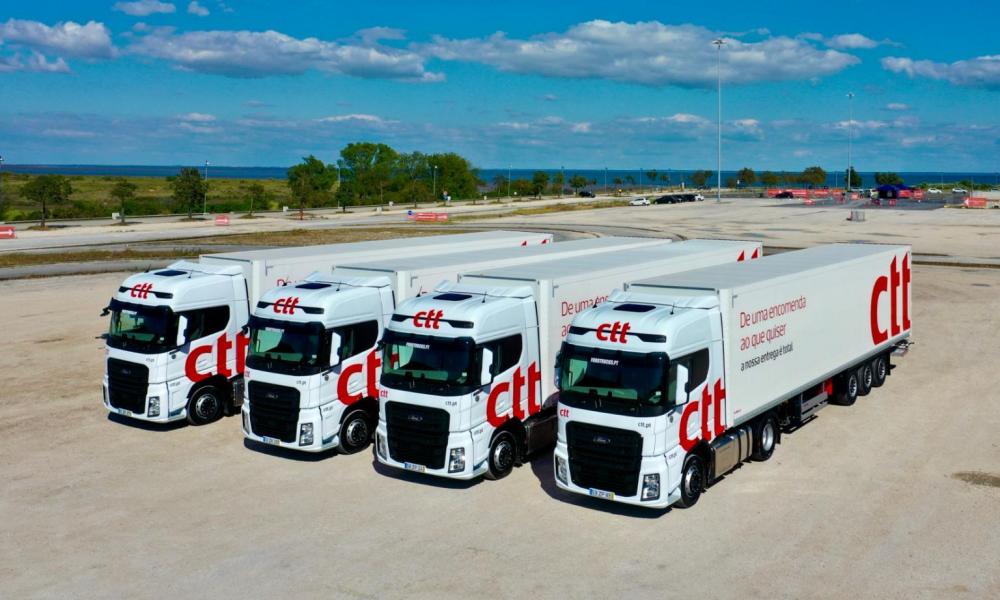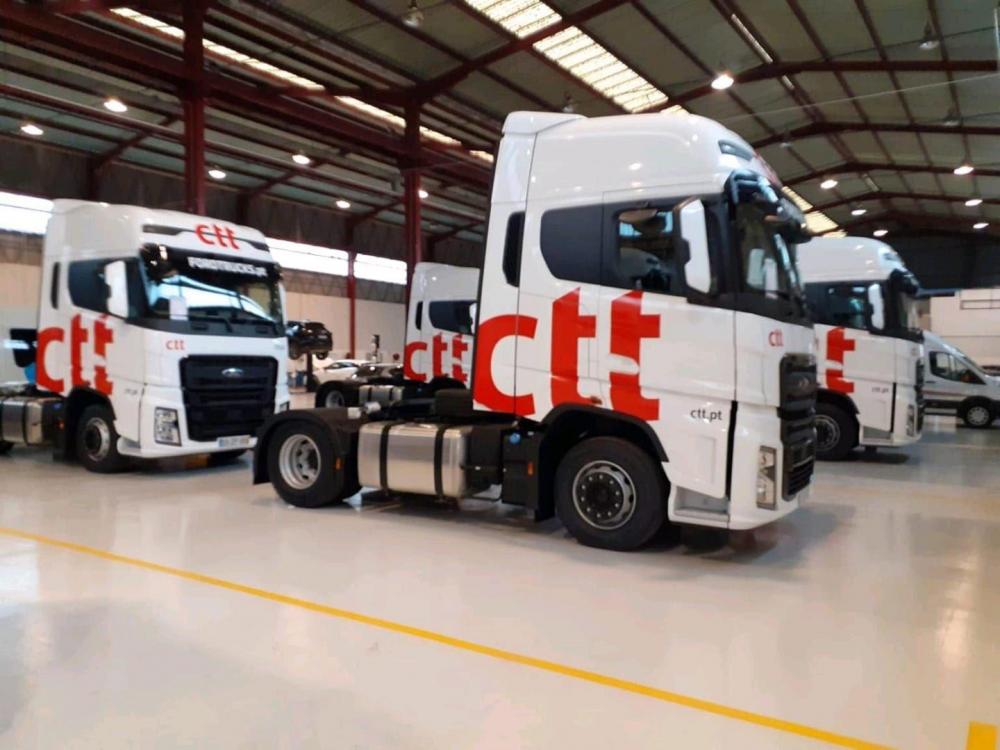
kscarbel2
Moderator-
Posts
18,539 -
Joined
-
Days Won
112
Content Type
Profiles
Forums
Gallery
Events
Blogs
BMT Wiki
Collections
Store
Everything posted by kscarbel2
-
Jim, the Cruise-Liner was a big step forward for Mack, and the Mack Western division's chance to prove itself. It was the result of west coast truck engineers that Mack had hired. In theory, they could give us a leap forward with a true west coast design. In the eyes of most Mack people hwever, the original Hayward designed/produced Cruise-Liner was an engineering disaster. The freedom given the west coast engineers was revoked, and the 2nd gen Cruise-Liner was designed/built in Allentown, fixing many of the shortcomings. But it was the superb, still class-leading MH Ultra-Liner that restored Mack's reputation as a designer of cutting edge COEs. I never had a problem with the windshields, 9QT59301 (RH) and 9QT59302 (LH), or the driver's instrument panel. The axle-mounted steering arrangement was a huge mistake. We sold far more steering gears than normal. The average customer replaced the steering gears three times over the life of the truck. The telescoping steering shaft, between the floor board bottom and the axle-mounted steering gear, wore out prematurely. Again, we sold thousands of replacement units, averaging 2-3 over the life of a truck. We sold thousands of pitman arms which wallowed out prematurely. (the output shaft splines and pitman arm splines were constantly wallowed out owing to the nature of the stupid design). The disconnecting (ball and socket) shift linkage, specifically the gears, rails, bushings and seals in the tower, also had unacceptably short life (the average truck's shift tower was rebuilt at least 3 times over its life). It was a terrible design, whereas the shift linkage on the MH Ultra-Liner was superb. And the frame rail did not use Mack's superb "body-bound bolts", which led to frame rail fastener headaches. I did prefer the original first generation Cruise-Liner instrument panel over the simplified second generation, as it looked sharper. However the 1st generation center console didn't hold up. The 2nd gen design eliminated it. The 1st gen center console was excessively large restricting bunk access, and the top (with the vents) frequently cracked and required replacement, a problem resolved with the second generation (It's pretty embarrassing when west coast Mack dealers have console covers hanging in their parts lobby because they're such strong sellers). And then you had those expensive rubber riv-nuts that retained the grille constantly falling out. Here it is year 2016 and I couldn't possibly forget the part number, 68RU29301P5, because it was a hot issue. The Trico pantograph windshield wiper arms and their transmissions didn't hold up. All of these issues were covered in Mack Service Bulletins.............there were more service bulletins on the WS/WL Cruise-Liner than any other single model in the history of Mack Trucks. I found the cab was "beat" less with the 10,500lb front suspension. But dealers were accustomed to ordering the 12,000 front suspension, as they had for years with the heavier steel-cabbed F-model. The work ethic of the people at the Hayward plant was terrible. They were "California casual" about showing up for work......one never knew how many people were coming in. The Allentown people sent out there were in constant frustration. The workers would install cab screws with their power tools until the threads were stripped. They didn't care. The idea of setting up a west coast plant for west coast truck production was logical. However, there was a people problem. This is all why the plant was closed, and the 2nd gen Cruise-Liner was built at Macungie.......with significantly better quality.
-
Ford lauds 'fantastic' effort at damaged BorgWarner plant, expects no impact on F-150 Michael Martinez, Automotive News / April 30, 2020 Ford Motor Co. dodged what could have been a serious disruption to the production of its most profitable vehicles, including the F-150 pickup. The automaker, despite the coronavirus pandemic, had repair teams on the ground 12 hours after a tornado earlier this month ripped through a BorgWarner factory in Seneca, S.C., that supplies transfer cases to Ford's pickups and large SUVs. Although Ford filed a notice with the Securities and Exchange Commission noting production could be disrupted, its head of manufacturing said Thursday he's not expecting any impact by the time Ford's factories — shuttered by the coronavirus — resume operations. "The recovery that BorgWarner's been able to do, with us supporting them, has been fantastic," said Ford's chief manufacturing and labor affairs officer Gary Johnson. "I'm extremely confident that when we start up our systems in the U.S. and North America, BorgWarner will support them. The risk is dropping every day." The supplier plans to resume limited production at the plant in early May. BorgWarner supplies transfer cases for the F-150, as well as the four-wheel-drive and all-wheel-drive versions of the Expedition, Super Duty, Explorer and Transit and the Lincoln Navigator and Aviator. "We can't re-source it," Johnson said. "The decision was made to help retrofit the plant to make it viable to come back." He said members of Ford's IT team helped rebuild computer rooms and other Ford workers helped repair the plant's roof. BorgWarner employees have been routinely posting updates on Facebook about their many accomplishments at the site. The company on Wednesday released this statement: "BorgWarner can confirm that we are planning to resume limited production in early May at our ... facility which was impacted by a tornado in the early morning hours of Monday, April 13th. We have teams onsite working on necessary repairs to the facility to make this happen in a safe and efficient way. We appreciate the support of the Oconee community and the State of South Carolina, our neighbors and our customers during this time." This isn't the first time Ford has scrambled to save F-150 production. The company in late 2018 was among the first on site after a fire destroyed a supplier plant in Michigan that also supplied its prized pickup. Workers pitched tents as they waited for access to the facility. Once inside, they extracted 19 large tools over 48 hours and moved them to other sites, at one point renting a rare Russian cargo jet to transport a heavy die to a plant in the U.K.
-
The Trump administration plans to accelerate the development of a potential coronavirus vaccine and manufacture billions of doses by January. The U.S.'s top infectious disease expert Dr. Anthony Fauci today said: We're in the early phases of a trial — Phase 1. When you go into the next phase, we’re going to safely and carefully, but as quickly as we possibly can, try and get an answer as to whether it works and is safe. And if so, we’re going to start ramping up production with the companies involved. You don’t wait until you get an answer before you start manufacturing -- you at risk proactively start making it, assuming it’s going to work, and if it does, then you can scale up and hopefully get to that timeline. So we want to go quickly, but we want to make sure it’s safe and it’s effective. I think that is doable. Remember go back in time, I was saying in January and February that it would be a year to 18 months. January is a year — so it isn't that much from what I had originally said."
-
You have done an absolutely incredible job! Such an exciting story right from the beginning in your search for this truck.
-
Mike Johnson found this original BJ and the Bear Aerodyne in Georgia back in 2007. These are the photos he took of it before it was purchased and restored by father & son team Craig & Paul Sagehorn, who now uses it to haul a reefer trailer across 48 States. This particular truck was actually used on screen in the popular television series. The following story is available on line. The link is at the bottom. With many thanks to Land Line mag.com __________________________________________________________________________ 10/4/2012 'B.J. and the Bear' truck still delivers By Kimberely Lennard, Land Line staff writer Although the television show “B.J. and the Bear” only ran from 1978 to 1981, the truck behind the show remains a show-stopper over 30 years later. OOIDA headquarters was abuzz on Thursday when Life Member Craig Sagehorn from Sparta, WI, stopped by in his famous 1980 Kenworth cabover, one of the trucks driven by character B.J. McKay in the TV show. Craig and his son, Paul Sagehorn, bought the truck from a man in Douglasville, GA, in 2007 and rebuilt it. They took it completely apart and sandblasted it. While restoring the truck, Paul found the inscription “BJ and the Bear by WS” under a bunch of rust where the fifth wheel was welded. Craig drives it mostly for local hauls of about a hundred miles, although he told “Land Line Now” he left Wisconsin about three weeks and 7,000 miles ago, hauling potatoes to Miami, FL; liquid eggs to San Antonio, TX; and rice to Boise, ID. He was headed to Raleigh, NC, to deliver potatoes and onions when he visited OOIDA in Grain Valley, MO, and will run another 5,000 miles before he sees Wisconsin again. It’s not uncommon for people to approach Craig and shake his hand and thank him for saving history. “We didn’t go at it with that attitude. It’s just a really neat truck,” Craig said. His son watched the show as a kid and at 30 years old decided he wanted one. The Sagehorns originally had a 1984 Kenworth Aerodyne they painted to look like the “B.J. McKay” truck. They bought that truck in 1999 and sold it in 2008 after they found the “real” truck. The 1980 Kenworth is from the 1981 season of the show, according to Craig. They found it on the Internet and called the owner, who wasn’t actually looking to sell the truck, Paul told Land Line. They made an offer and are the fifth owners of the truck. “Anybody that’s ever seen the show knows the truck instantly,” Craig said. He added that four years ago a guy got on the CB and sang the “BJ and the Bear” theme song when he passed by. Greg Evigan, aka B.J., has joined the Sagehorns at several truck shows and Craig says people tell Evigan they drive a truck because of that show. “Greg never had an inkling initially of what impact that show had on kids that age.” Craig hasn’t forgotten about “Bear” either, although his chimpanzee travel companion is of the stuffed variety. http://m.landlinemag.com/Story.aspx?StoryID=24250#.VqTdhyp97IX .
-
Transport Engineer / April 30, 2020 For the first time, Don-Bur has manufactured a lifting deck tri-axle trailer design with an expanding roof. The new product, designed for a parcel delivery company, provides 7.8% more head room on the lower deck during loading, but keeps overall height to 4.5m when in transit to avoid low bridge restrictions and retain a more ideal aerodynamic profile. Lifting deck trailers were invented by Don-Bur in the late 1980’s and continue to rise in popularity due to high payload volume and rapid turnaround at the bay without additional specialist bay equipment, the company says. The simple premise is a secondary deck that, when loaded in its lowered position to suit bay height, then rises via hydraulics to a second height, allowing another full payload to be loaded underneath it. However, straight-frame lifting decks in particular have limited lower-deck apertures whose heights are fixed between the height of the fifth wheel and the overall height. This restriction can cause challenges during loading. The new expanding roof overcomes this by allowing the loaded second deck to raise much higher than normal during lower deck loading. After loading and before transit, the roof and deck lower again to a position where gaps over the load are minimal. Aerodynamically, the force of drag is directly proportional to the frontal area of the trailer. Therefore, the ability to keep the roof 350mm lower than a full-height 4.85m-high double deck reduces drag force by an estimated 661 Newtons, at 56mph. This 15.5% reduction in drag is expected to realise a 5% fuel saving, as wind resistance is thought to contribute about a third to total drag (other components being surface friction, tyre deformation and drive line resistance). One of the most ingenious parts of the design is the roof attachment system. During part of the loading operation, the second deck has to move up and down freely and independently of the roof. However, as the deck extends upwards to generate more head height, so too does the roof to prevent the upper load being crushed. Not only that, but the roof then has to forcibly clamp back down onto the body structure, to ensure the correct lower height and prevent water ingress. Don-Bur has developed and innovative solution to this challenge and, for this reason, has applied for a patent. The new trailer design won’t suit operators that need to carry high, indivisible payloads. There, a step-frame design may be more applicable. Instead, the new model is said to be best suited to those with lower cage heights and pallets or loose loads. It could also be used for companies that switch between operation in Northern Ireland (which has a 4,650mm overall height restriction) and the UK mainland; the latter having a 250mm potential height benefit, equivalent to an 8.6m3 volume increase. .
-
Transport Engineer / April 29, 2020 South west builders’ merchant CRS has added a further four DAF CF 370 FAN rigids to its fleet. The three-axle delivery vehicles feature a steer, drive and lifting rear-steer tag-axle configuration, delivering what the operator’s transport manager, Paul Gibbard, describes as “outstanding manoeuvrability and payload”. Having considered the DAF 18-tonne models already in the fleet, Gibbard decided the weight and body length options of the 26-tonner offered greater operational flexibility. The operator says: “We have spec’d the 26-tonne trucks to have the same overall chassis lengths as the 18-tonners, but with our 6.1m internal body length we can get greater payload. For instance, on our 18-tonners we get five packs of blocks; the 26-tonners take nine, no problem. They run comfortably with 13t on board and that gives us greater options on delivery schedules. We can make more drops per run, saving time and, just as important, saving significantly on fuel. With the drive axle relatively close to the steer, and with the steered tag axle, we find drivers are able to make speedier and more accurate drops in even the tightest of sites.” The new trucks are equipped with bespoke dropside bodies and carry Palfinger BM26 cranes, all fitted by Palfinger UK. CRS has had sensored crane slipper pads fitted to the rear of each vehicle to give drivers maximum safety and flexibility on the varying delivery conditions they meet. “Safety is very important to us: for our drivers, customers and other road users,” says Gibbard. “It starts with ensuring complete compliance, and our local dealer, Kingdon Wessex DAF, looks after us very well on service, maintenance and inspections. Then, apart from the additional crane stability pads, we add such things as recording camera units all-round, repeat-indicator side markers, Fresnel lenses on near-sides, lifting rear mud flaps to aid reversing safety in tight sites, cage sensors …. the list goes on and on. And we brief our drivers fully on every aspect.” The DAF CFs are all equipped with Traxon 12-speed automated gearboxes, which Gibbard had trialled off-road in an 8x4 tipper at a DAF Ride & Drive day. “I have to say I thought it was simply the very best box on the market, nothing else I have tried compares.” He added, “The thing is, these DAFs are like a big Swiss Army knife, they just have everything you need.” CRS, which only started in business in 2005, now operates a fleet of 40 trucks out of 12 branches across the South West. One of the two founding directors, Chris Waelchli, discusses fleet acquisition strategy for a small business. He states: “Let’s be honest: to start with, you run anything, so long as it’s safe. Then, when you can afford it, you try and do better. So the growth of the fleet and the quality and newness of its vehicles is simply a reflection of how well the business has done. “Now though, with a busy fleet, it is all about back-up. You can pay as much as you want for trucks, but without good back-up you have nothing, and right now we are very happy with DAF products and DAF back-up. As Paul has said, compliance and safety are everything, and it’s nice to be in a position where drivers also understand and respect that. The other bonus with a modern fleet, of course, is that we are automatically more environmentally supportive and able to fit in with such things as Bath and Bristol’s drive toward their clean air zones.” The new DAFs are all on five-year packages from PACCAR Financial, and all are on seven-year R&M contracts. “We’ve virtually doubled the fleet in the last 20 months,” concludes Gibbard, “so getting the package right was important – and getting it all through the same source makes life much simpler.” .
-
Commercial Motor / April 30, 2020 DAF has entered the market for trucks fitted with occasional on-demand hydraulic front-wheel-drive systems. Its first application will be on CF and XF 4x2 tractors powered by PACCAR MX11 and MX13 engines, with other variants to follow later in the year in response to market reaction. DAF’s offering has been developed in association with the German heavy-duty and off-road conversion specialist Paul Nutzfarzeuge, hence the option’s designation PXP (Paul Xtra Power). Reflecting its specialist nature, the option will cost in the region of €25,000 (£21,700). The system is controlled by a dashboard switch, but remains on standby until driven axle slip is detected, when the hydraulic drive to the front axle is immediately activated. The amount of drive provided is directly related to the rear axle slip detected. The function is available in the first four forward gears and first and second reverse gears, at speeds up to 20kph. At faster speeds or in higher gears, the system automatically disengages returns to standby until needed again. The front drive is provided by individual hydraulic hub motors, operating at 360bar to produce up to 6,435Nm of torque. The hydraulic power is provided from a PTO-driven pump and tank which can be shared with other hydraulic consumers such as hook and skip loaders. .
-
There's a difference between looking at a photograph and viewing in person. But based on the pictures I'd have to agree, that fitment appears poorly done.
-
Federal Government Subpoenas GM Financial Documents from 2005–2019 Car & Driver / April 29, 2020 In the five months since General Motors attacked Fiat Chrysler in a fraud lawsuit based on charges that its rival was involved in racketeering with the United Auto Workers, the Feds have pointed their crosshairs straight back at GM. According to the Wall Street Journal, the Justice Department is looking at corruption schemes between the UAW and GM as the U.S. bolsters its unprecedented criminal probe into one of the country's most powerful unions. Federal investigators have interviewed both current and former GM employees within the company's labor relations department and, in particular, have subpoenaed financial records from the UAW-GM joint employee training center—the very same jointly owned entity that at FCA has led to the indictments of 14 former FCA and UAW officials, the majority of whom have pleaded guilty. Four union reps are currently in prison. GM agreed to shut down its training center this year, as the UAW was on strike for five weeks. That plant shutdown cost GM more than $1 billion—and it helps to explain why GM filed the lawsuit against FCA shortly afterward. But the WSJ says that relatives of union leaders were given jobs in return for bribes and that there are more GM employees and UAW officials who orchestrated a kickback scheme, which led to last year's arrest of former union vice president Joe Ashton. He pleaded guilty in December of having funneled a quarter-million dollars into his own pocket, according to federal prosecutors. At least one scheme involved 50,000 wristwatches that Ashton ordered from the UAW-GM Training Center for UAW members, who allegedly never received them. GM claims that corruption between the UAW and FCA is the reason it lost billions on two labor contracts it signed with the UAW in 2011 and 2015. Yet that case will certainly lose merit if investigators find GM to be just as culpable as FCA in what appears to be a sordid game of bribes, shakedowns, and embezzlements.
-
Mack RD Mixers For Sale in Southern Illinois
kscarbel2 replied to autocardc's topic in Trucks for Sale
Mack RD's in "Western Contractor" spec. This was the replacement for the North American market Value-Liner.- 1 reply
-
- 1
-

-
Ford Trucks Romania / April 29, 2020 These model 1833 Ford Trucks are on a mission! Streets without garbage, cleaner cities, a more user-friendly environment for residents. Thank you for choosing Ford Trucks to increase your productivity! "Ford Trucks and you - Sharing the load!" .
-
Ford Trucks Portugal / April 29, 2020 CTT, Portugal's largest distribution company, chooses Ford Trucks' award-winning F-MAX. .
-
Mainz, Germany-based BioNTech and US pharmaceutical Pfizer have begun human trials of a potential Covid-19 vaccine that could supply millions by the end of the year. Pfizer says it will begin testing the experimental vaccine in the United States next week, and says a vaccine could be ready for emergency use in the fall.
-
Ford expects $5 billion operating loss in Q2 Michael Martinez, Automotive News / April 28, 2020 DETROIT -- Ford Motor Co. expects an operating loss of more than $5 billion in the second quarter as the financial toll of the coronavirus crisis continues to worsen. The automaker said Tuesday that it lost $632 million before interest and taxes in the first quarter, although it made $346 million before interest and taxes in North America. That came despite shuttering U.S. assembly plants for the final two weeks of the quarter. CFO Tim Stone said if the coronavirus crisis had not occurred Ford was tracking to post $1.4 billion or more in adjusted earnings before interest and taxes. Ford in the first quarter lost money in every region outside of North America, including a $241 million loss in China, which was the first region impacted by the virus. Ford Credit made $30 million in the quarter, down $771 million from the same period a year ago. Ford’s mobility unit lost $300 million in the quarter as the automaker announced it would postpone the launch of its autonomous vehicle commercial services until 2022. Stone said Ford had $35 billion in cash as of April 24 and that he believed it had sufficient cash to get it through the end of the year “with no additional vehicle wholesales or financing actions.” "Our objective is not just to withstand the crisis, we’re ensuring the flexibility to continue to invest in our future,” Stone said on a conference call with journalists. Ford CEO Jim Hackett and other executives noted Ford remained on track with its global redesign plans despite the coronavirus and that the team would continue putting money into “growth opportunities.” The operating loss and $2 billion net loss Ford posted Tuesday were in line with the preliminary results it reported in a regulatory filing April 17. The company said Tuesday that it still can't provide full-year guidance because "today's economic environment remains too ambiguous." Ford's U.S. vehicle sales fell 12 percent in the first quarter, with most of the damage coming in late March as the pandemic swept across the country. The automaker on March 18 agreed to close all of its U.S. factories to protect workers and help stop the spread of the virus. Stone refused Tuesday to offer a timeframe on reopening Ford’s U.S. assembly plants, although it plans a phased reopening of European facilities beginning May 4. The Wall Street Journal on Monday reported the Detroit 3 automakers are targeting May 18 to reopen plants in the U.S., although all three automakers said no decision has been made.
-
Reuters / April 28, 2020 A senior White House adviser warned on Tuesday that near-term unemployment and GDP data will be a “very grave” negative shock. Kevin Hassett, senior economic adviser to President Trump says unemployment could reach 16-20%, and GDP output could fall as much as 30-40% on annualized basis in the second quarter, a prediction in line with Wall Street and Congressional Budget Office forecasts. “We’re going to have the biggest shock since the Great Depression,” Hassett said. “It’s a very grave shock and something we need to take seriously.” He said first quarter GDP growth number being released on Wednesday would likely be negative. This “will be just the very tip of the iceberg of a few months of negative news that’s unlike anything you’ve ever seen.”
-
MarketWatch / April 28, 2020 President Trump on Tuesday said he would sign an executive order to keep meat processing plants open. The order is meant to stave off a shortage of chicken, pork and other meat on U.S. supermarket shelves because of the coronavirus. The order will use the Defense Production Act to classify meat processing as critical infrastructure to keep production plants open. Trump said the order would address what he called “liability problems” in the food supply chain. Meat-processing plants have weighed the risks of prosecution if they are blamed for spreading infection during the pandemic. Tyson, for example, suspended production at an Iowa pork processing plant due to a coronavirus outbreak among employees. “We’re working with Tyson, which is one of the big companies in that world,” Trump said.
-
Go Oxford ! Thank you Bill and Melinda Gates ! Let's make the world healthy and normal again !
-
Oxford University-developed Coronavirus vaccine could be ready by September The New York Times / April 27, 2020 In the worldwide race for a vaccine to stop the coronavirus, the laboratory sprinting fastest is at Oxford University. Most other teams have had to start with small clinical trials of a few hundred participants to demonstrate safety. But scientists at Oxford University’s Jenner Institute had a head start on a vaccine, having proved in previous trials that similar inoculations — including one last year against an earlier coronavirus — were harmless to humans. That has enabled them to leap ahead and schedule tests of their new coronavirus vaccine involving more than 6,000 people by the end of next month, hoping to show not only that it is safe, but also that it works. The Oxford scientists now say that with an emergency approval from regulators, the first few million doses of their vaccine could be available by September — at least several months ahead of any of the other announced efforts — if it proves to be effective. Now, they have received promising news suggesting that it might. Scientists at the National Institutes of Health’s Rocky Mountain Laboratory in Montana last month inoculated six rhesus macaque monkeys with single doses of the Oxford vaccine. The animals were then exposed to heavy quantities of the coronavirus that is causing the pandemic — exposure that had consistently sickened other monkeys in the lab. But more than 28 days later all six were healthy, said Vincent Munster, the researcher who conducted the test. “The rhesus macaque is pretty much the closest thing we have to humans,” Dr. Munster said, noting that scientists were still analyzing the result. He said he expected to share it with other scientists next week and then submit it to a peer-reviewed journal. Immunity in monkeys is no guarantee that a vaccine will provide the same degree of protection for humans. A Chinese company that recently started a clinical trial with 144 participants, SinoVac, has also said that its vaccine was effective in rhesus macaques. But with dozens of efforts now underway to find a vaccine, the monkey results are the latest indication that Oxford’s accelerated venture is emerging as a bellwether. “It is a very, very fast clinical program,” said Emilio Emini, a director of the vaccine program at the Bill and Melinda Gates Foundation, which is providing financial support to many competing efforts. Which potential vaccine will emerge from the scramble as the most successful is impossible to know until clinical trial data becomes available. More than one vaccine would be needed in any case, Dr. Emini argued. Some may work more effectively than others in groups like children or older people, or at different costs and dosages. Having more than one variety of vaccine in production will also help avoid bottlenecks in manufacturing, he said. But as the first to reach such a relatively large scale, the Oxford trial, even if it fails, will provide lessons about the nature of the coronavirus and about the immune system’s responses that can inform governments, donors, drug companies and other scientists hunting for a vaccine. “This big U.K. study,” Dr. Emini said, “is actually going to translate to learning a lot about some of the others as well.” All of the others will face the same challenges, including obtaining millions of dollars in funding, persuading regulators to approve human tests, demonstrating a vaccine’s safety and — after all of that — proving its effectiveness in protecting people from the coronavirus. Paradoxically, the growing success of efforts to contain the spread of Covid-19, the disease caused by the virus, may present yet another hurdle. “We’re the only people in the country who want the number of new infections to stay up for another few weeks, so we can test our vaccine,” Prof. Adrian Hill, the Jenner Institute’s director and one of five researchers involved in the effort, said in an interview in a laboratory building emptied by Britain’s monthlong lockdown. Ethics rules, as a general principle, forbid seeking to infect human test participants with a serious disease. That means the only way to prove that a vaccine works is to inoculate people in a place where the virus is spreading naturally around them. If social distancing measures or other factors continue to slow the rate of new infections in Britain, he said, the trial might not be able to show that the vaccine makes a difference: Participants who received a placebo might not be infected any more frequently than those who have been given the vaccine. The scientists would have to try again elsewhere, a dilemma that every other vaccine effort will face as well. The Jenner Institute’s coronavirus efforts grew out of Professor Hill’s so-far unsuccessful pursuit of a vaccine against a different scourge, malaria. He developed a fascination with malaria and other tropical diseases as a medical student in Dublin in the early 1980s, when he visited an uncle who was a priest working in a hospital during the civil war in what is now Zimbabwe. “I came back wondering, ‘What do you see in these hospitals in England and Ireland?’” Professor Hill said. “They don’t have any of these diseases.” The major drug companies typically see little profit in epidemics that afflict mainly developing countries or run their course before a vaccine can hit the market. So after training in tropical medicine and a doctorate in molecular genetics, Professor Hill, 61, helped build Oxford’s institute into one of the largest academic centers dedicated to nonprofit vaccine research, with its own pilot manufacturing facility capable of producing a batch of up to 1,000 doses. The institute’s effort against the coronavirus uses a technology that centers on altering the genetic code of a familiar virus. A classic vaccine uses a weakened version of a virus to trigger an immune response. But in the technology that the institute is using, a different virus is modified first to neutralize its effects and then to make it mimic the one scientists seek to stop — in this case, the virus that causes Covid-19. Injected into the body, the harmless impostor can induce the immune system to fight and kill the targeted virus, providing protection. Professor Hill has worked with that technology for decades to try to tweak a respiratory virus found in chimpanzees in order to elicit a human immune response against malaria and other diseases. Over the last 20 years, the institute has conducted more than 70 clinical trials of potential vaccines against the parasite that causes malaria. None have yet yielded a successful inoculation. In 2014, however, a vaccine based on the chimp virus that Professor Hill had tested was manufactured in a large enough scale to provide a million doses. That created a template for mass production of the coronavirus vaccine, should it prove effective. A longtime colleague, Prof. Sarah Gilbert, 58, modified the same chimpanzee virus to make a vaccine against an earlier coronavirus, MERS. After a clinical trial in Britain demonstrated its safety, another test began in December in Saudi Arabia, where outbreaks of the deadly disease are still common. When she heard in January that Chinese scientists had identified the genetic code of a mysterious virus in Wuhan, she thought she might have a chance to prove the speed and versatility of their approach. “We thought, ‘Well, should we have a go?’” she recalled. “‘It’ll be a little lab project and we’ll publish a paper.’” It did not stay a “little lab project” for long. As the pandemic exploded, grant money poured in. All other vaccines were soon put into the freezer so that the institute’s laboratory could focus full-time on Covid-19. Then the lockdown forced everyone not working on Covid-19 to stay home altogether. “The whole world doesn’t usually stand up and say, ‘How can we help? Do you want some money?’” Professor Hill said. “Vaccines are good for pandemics,” he added, “and pandemics are good for vaccines.” Other scientists involved in the project are working with a half dozen drug manufacturing companies across Europe and Asia to prepare to churn out billions of doses as quickly as possible if the vaccine is approved. None have been granted exclusive marketing rights, and one is the giant Serum Institute of India, the world’s largest supplier of vaccines. Donors are currently spending tens of millions of dollars to start the manufacturing process at facilities in Britain and the Netherlands even before the vaccine is proven to work, said Sandy Douglas, 37, a doctor at Oxford overseeing vaccine production. “There is no alternative,” he said. But the team has not yet reached an agreement with a North American manufacturer, in part because the major pharmaceutical companies there typically demand exclusive worldwide rights before investing in a potential medicine. “I personally don’t believe that in a time of pandemic there should be exclusive licenses,” Professor Hill said. “So we are asking a lot of them. Nobody is going to make a lot of money off this.” The Jenner Institute’s vaccine effort is not the only one showing promise. Two American companies, Moderna and Inovio, have started small clinical trials with technologies involving modified or otherwise manipulated genetic material. They are seeking both to demonstrate their safety and to learn more about dosing and other variables. Neither technology has ever produced a licensed drug or been manufactured at scale. Armed with safety data from their human trials of similar vaccines for Ebola, MERS and malaria, though, the scientists at Oxford’s institute persuaded British regulators to allow unusually accelerated trials while the epidemic is still hot around them. The institute last week began a Phase I clinical trial involving 1,100 people. Crucially, next month it will begin a combined Phase II and Phase III trial involving another 5,000. Unlike any other vaccine project now underway, that trial is designed to prove effectiveness as well as safety. The scientists would declare victory if as many as a dozen participants who are given a placebo become sick with Covid-19 compared with only one or two who receive the inoculation. “Then we have a party and tell the world,” Professor Hill said. Everyone who had received only the placebo would also be vaccinated immediately. If too few participants are infected in Britain, the institute is planning other trials where the coronavirus may still be spreading, possibly in Africa or India. “We’ll have to chase the epidemic,” Professor Hill said. “If it is still raging in certain states, it is not inconceivable we end up testing in the United States in November.”
BigMackTrucks.com
BigMackTrucks.com is a support forum for antique, classic and modern Mack Trucks! The forum is owned and maintained by Watt's Truck Center, Inc. an independent, full service Mack dealer. The forums are not affiliated with Mack Trucks, Inc.
Our Vendors and Advertisers
Thank you for your support!


